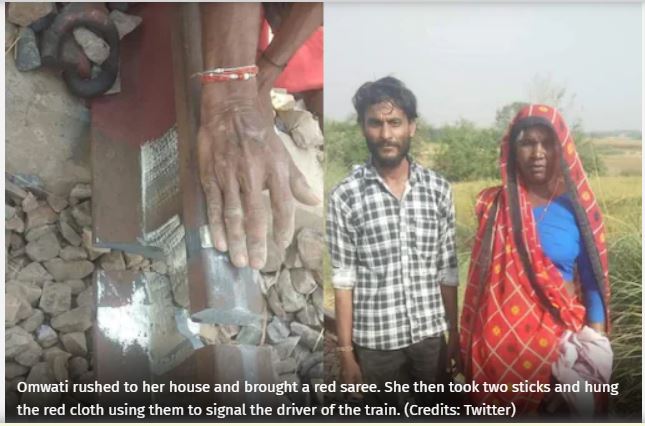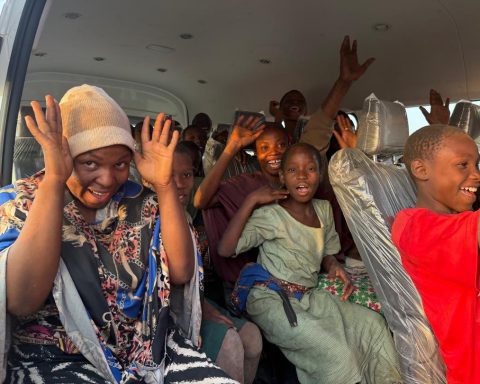Just when we were yet to get over the Kaduna train attack in Nigeria, a woman Omvati Devi in faraway India has saved 150 to 200 passengers aboard a train in Uttar Pradesh, India just with her red sari.
Devi reportedly waved her red sari to stop the train, after spotting broken tracks further down the line.
Join our WhatsApp ChannelNow celebrated as the heroine of her time, the driver of the train was able to stop the train just in the nick of time, avoiding what would have gone down in history as another train ‘attack’ but this time India.
She narrated: “I was on my way to the land for routine work and it was then when I stumbled to found a broken track.”
“I was quick to realize that this could result in a massive tragedy. Well, I had heard a lot that red stands for danger,” she said.
Devi’s quick-thinking benefitted between 150 to 200 passengers aboard the train, waving the flowing red garment in front of the approaching train when she noticed part of the line was faulty.
“I used my sari to tie it around the track to thwart any untoward incident which luckily did work when the driver applied brakes,” she enthused.

For her heroic deed, the driver offered her 100 rupees, but she initially turned it down.
In her words: “Then, he insisted that I keep the money, which I did.”
The largest online encyclopedia, Wikipedia, has it that a sari, which is also known as hari or saree is a women’s garment from the Indian subcontinent that consists of an unstitched drape varying from 4.5 to 9 metres (15 to 30 feet) in length and 600 to 1,200 millimetres (24 to 47 inches) in breadth that is typically wrapped around the waist with one end draped over the shoulder, partly baring the midriff.
“It is traditionally worn in the countries of India, Pakistan, Bangladesh, Sri Lanka and Nepal. There are various styles of sari manufacture and draping, the most common being the Nivi style. The sari is worn with a fitted bodice commonly called a choli (ravike or kuppasa in southern India, and cholo in Nepal) and a petticoat called ghagra, parkar, or ul-pavadai. It remains fashionable in the Indian Subcontinent today,” Wikipedia said.












